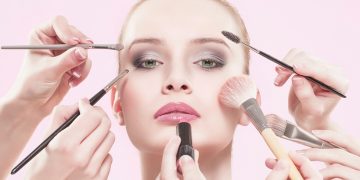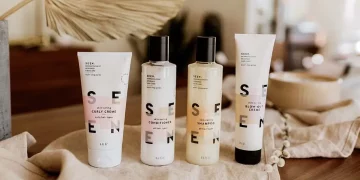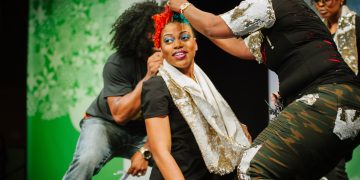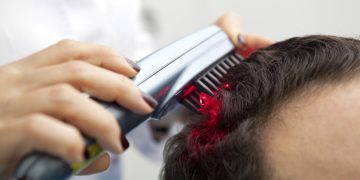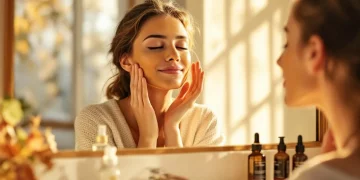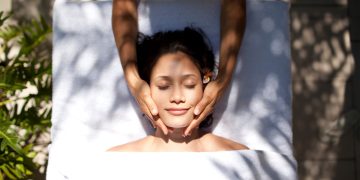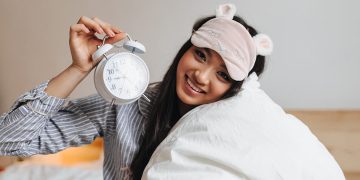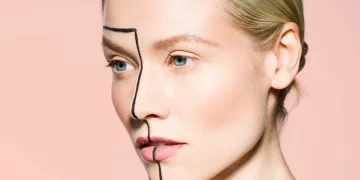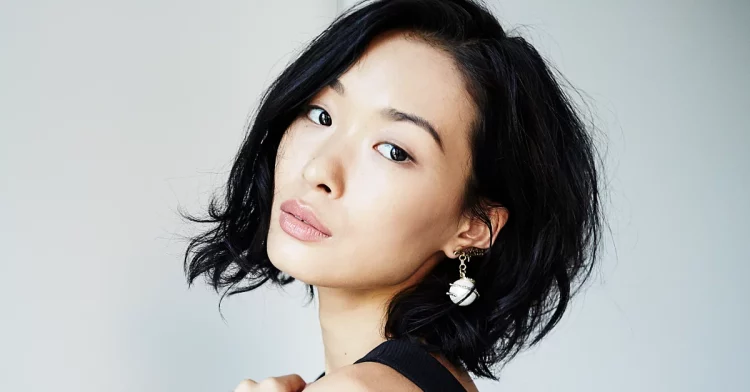Eye makeup has always been one of the most transformative aspects of beauty. With a single brush stroke, eyes can appear larger, more lifted, more defined, or more expressive. Yet the secret to truly impactful eye makeup lies not in complex artistry—but in precision. Understanding your eye shape is the foundation for creating looks that enhance rather than overpower.
Hooded lids, monolids, round eyes, almond eyes, deep-set eyes, and downturned shapes each require different placement, product choices, and contouring strategies. When makeup aligns with anatomy, results can be dramatic but still seamless. This article explores tailored eye techniques through the lens of shape-specific design, focusing especially on hooded lids, monolids, and contour correction strategies that refine and balance the eyes.
By the end, you’ll understand how to adapt color, depth, and line placement to create flattering, precise, and expressive looks for every eye type.
1. Why Does Eye Shape Matter in Makeup Artistry?
Eye makeup isn’t one-size-fits-all. A technique that looks perfect on one person may look heavy or imbalanced on another. This is because each eye shape interacts differently with:
- crease placement
- lid space
- brow bone prominence
- lash line curvature
- orbital bone structure
The Role of Light and Shadow
Eye makeup is fundamentally contouring: placing shadows to recede areas and highlights to bring others forward. Understanding a person’s natural folds and angles helps artists sculpt the illusion of balance and dimension.
How Eye Anatomy Guides Technique
During blinking or talking, some shapes hide the lid (hooded), others reveal a large canvas (monolids), and some create natural lift (almond eyes). Mastering these variations leads to makeup that stays visible in motion and enhances rather than competes with natural structure.
2. What Are the Best Techniques for Hooded Lids?
Hooded eyes have a fold that drapes over the natural crease, often hiding the eyelid. This can cause makeup to smudge or disappear when the eyes are open.
But hooded lids are expressive, mysterious, and incredibly photogenic—with the right techniques.
Key Goals for Hooded Eyes
- Lift the outer corner
- Create a visible crease illusion
- Prevent smudging
- Open the eyes without heavy textures
Step-by-Step Precision Technique
1. Create a Faux Crease
Apply matte shadow slightly above the natural crease—often on the lower brow bone area.
This becomes the visible crease when the eyes are open.
2. Use Matte Shadows for Structure
Shimmers in the crease can emphasize puffiness.
Mattes create smooth contour and lift.
3. Tightline Instead of Thick Liner
A thick wing disappears under the fold; instead:
- tightline the upper waterline
- add a slim wing angled upward
- keep liner thin near the inner corner and thicken outward
4. Open the Lid with Light
Add shimmer or satin tones only on the mobile lid, avoiding the puffy area above.
5. Strategic Outer V Lift
Place deeper shades higher and outward, blending toward the temples to create lift.
Bonus Tips
- Waterproof formulas reduce smudging.
- Curling lashes dramatically opens hooded eyes.
- False lashes should be wispy and flared, not dense or heavy at the center.
Hooded lids are ideal canvases for smoky eyes and soft liner gradients.
3. What Techniques Work Best for Monolids?
Monolids have minimal or no visible crease, with a smooth, graceful eyelid surface. They offer an incredible artistic canvas for color, eyeliner creativity, and graphic looks—but require a different approach from crease-based designs.
Key Goals for Monolids
- Add dimension without forcing a fake crease
- Build upward gradient shading
- Use textures strategically
- Create clean, elongated shapes
Step-by-Step Precision Technique
1. Use Vertical, Not Horizontal Blending
Since monolids do not hinge on a crease, shadows are layered upward toward the brow bone.
This creates natural depth.
2. Build Gradients from Lash Line Up
Start with dark at the base and soften upward.
This prevents the color from disappearing when the eyes are open.
3. Embrace Shimmers on the Lid Center
Shimmers add dimensional contrast against a flat canvas, creating light play.
4. Master the Perfect Wing
Wings look incredibly striking on monolids.
Key principles:
- use gel or liquid liner
- draw the wing slightly straighter rather than upward
- fill in any fold gaps while eyes are open
5. Lash Strategy
Monolids often benefit from:
- volumizing mascara at the roots
- soft, feathery false lashes
- tightlining to enhance depth
What to Avoid
- Forcing an overly drawn-in crease (it looks artificial)
- Dark shadows over the entire lid (can make the eye look smaller)
Monolids excel in editorial and modern eye looks due to their smooth structure.

4. Are Contour Correction Techniques Necessary for Balanced Eye Shapes?
Eye contour correction is the art of visually adjusting the shape, balance, or symmetry of the eyes using shadows, lines, and highlights. It doesn’t imply “fixing”—rather, it enhances harmony.
Common Eye Shape Considerations
- Downturned eyes: need outer-corner lift
- Round eyes: benefit from elongated lines
- Deep-set eyes: require lighter colors to bring eyes forward
- Close-set eyes: need outward emphasis
- Wide-set eyes: enhanced definition near inner corner
Precision Techniques for Contour Correction
For Downturned Eyes
- Keep liner upward-angled
- Avoid drooping wings
- Concentrate dark shadow above outer corner
For Round Eyes
- Use liner to create almond elongation
- Blend shadow outward, not upward
- Avoid heavy center lash placement
For Deep-Set Eyes
- Choose satin finishes
- Keep dark colors minimal in the crease
- Brighten the inner lid
For Close-Set Eyes
- Highlight the inner corners
- Extend shadow and liner outward
- Avoid darkening the inner third
For Wide-Set Eyes
- Deepen the inner corner area
- Use tightline to add structure
- Blend shadow inward
Contour correction enhances natural beauty while maintaining authenticity.
5. How Do You Choose the Right Products for Each Eye Shape?
Technique matters, but the right formulations ensure longevity and clarity.
For Hooded Lids
- Waterproof eyeliner
- Long-wear matte shadows
- Lightweight shimmers
- Eye primer that resists creasing
For Monolids
- Gel or pen liners that won’t transfer
- Pigmented shadows for upward blending
- Cream shadows that set
- Lash-enhancing mascaras
For Contour Correction
- Neutral matte palettes
- Thin-tipped eyeliners
- Shadow sticks for precise shaping
Brush Recommendations
- small tapered crease brushes
- angled liner brushes
- flat shader brushes
- pencil brushes for detail work
High-quality tools ensure clean, precise application.
6. How Can You Adapt Eye Makeup for Everyday vs. Dramatic Looks?
Everyday Precision
- thin liner or tightline
- soft upward blend for hooded eyes
- gentle gradient for monolids
- light shimmer at inner corner
- neutral tones
Dramatic Precision
- bold wings for monolids
- deep smokes for hooded eyes
- cut-crease techniques for lifted shapes
- graphic liner
- metallic or foil lids
- bold color contrasts
A precise understanding of structure lets you amplify glam without losing balance.
7. How Does Lighting and Photography Affect Eye Makeup for Each Shape?
Different eye shapes reflect light uniquely.
Hooded Eyes
Need slightly higher-placed shadows to remain visible in photos.
Monolids
Shimmers photograph beautifully; matte gradients show sophistication.
Downturned or Round Eyes
Winged or elongated looks capture symmetry on camera.
Professionals adjust their techniques based on natural vs. studio lighting to maintain visibility.
8. What Is the Future of Eye Makeup Precision?
Trends are moving toward:
- AI-powered tailored makeup guides
- augmented reality tutorials specific to your eye shape
- customizable palettes designed by anatomy
- micro-thin liners for ultra-precision
- heat-sensitive pigments that adjust to movement
Personalized beauty is the next evolution of precision artistry.
Conclusion: Can Precision Eye Makeup Unlock Your Best Eye Shape?
Absolutely. Precision makeup isn’t about changing your eye shape—it’s about highlighting its unique strengths with thoughtfully placed light, shadow, texture, and definition. Hooded lids gain lift and clarity, monolids transform with gradient artistry, and contour correction ensures harmony across all shapes.
When makeup aligns with anatomy, the eyes look brighter, more expressive, and effortlessly balanced. Understanding your shape is the gateway to mastering your most flattering looks.







